Jade Varden's Blog, page 41
February 24, 2014
Writing 101: Can You Write Non-Fiction?
So you want to write a bestseller, right? Want to do a book signing in public? Have fans? Maybe even appear on one of those talk shows? Look at the statistics and pay attention to what sells, and you'll see that the non-fiction market is (always) booming. So here's what you need to figure out: can you write non-fiction?

Real vs. Imagined
Because I can't...not really, anyway. This is sort of a shame, since in my day job I'm required to write non-fiction for many hours on end. Lately I have been getting a lot of feedback about the need to incorporate myself more into these articles, add personal anecdotes and whatnot. I've written, at some length, about my great inability to actually do this.
I'm pretty good at researching topics, because formerly I wrote historical novels so facts have to be pretty solid in that genre. I can add a few jokes, here and there. And I can present information in a clear way, sometimes even complex stuff. But I can't get personal easily. Sometimes I can't do it at all. I have the ability to write non-fiction. I'm a writer, so I can eke out anything if I'm under enough duress to do so. It's sort of like a veterinarian who can perform people medicine, if there's just no other alternative.
But I can't write non-fiction very well, because I stay so detached from it. In fiction, I can lay my characters bare. I'll reveal the ugliest of thoughts, the darkest of motivations, the euphoria and the pain. I'll show dreams and backgrounds and even wardrobe. Actually lots of times wardrobe. I like fashion.
The point is, not all writers can create really good non-fiction. It's not enough to present the facts in a reasonable and readable way. I've found that it's not even enough to tell jokes. You have to make it personal, for you and the reader. You have to make it intimate, and unique, and all sorts of other things that editors are always telling me to do.
And I'm not great at it, but at least I know that. All writers have strengths and weaknesses. Find what you're good at, what you're not good at, and embrace it. If you've never tried writing non-fiction, you won't know whether or not you're any good at it. So don't just answer the question, really search for it. Finding out who you are as a writer is half the fun of claiming it as your own.

Real vs. Imagined
Because I can't...not really, anyway. This is sort of a shame, since in my day job I'm required to write non-fiction for many hours on end. Lately I have been getting a lot of feedback about the need to incorporate myself more into these articles, add personal anecdotes and whatnot. I've written, at some length, about my great inability to actually do this.
I'm pretty good at researching topics, because formerly I wrote historical novels so facts have to be pretty solid in that genre. I can add a few jokes, here and there. And I can present information in a clear way, sometimes even complex stuff. But I can't get personal easily. Sometimes I can't do it at all. I have the ability to write non-fiction. I'm a writer, so I can eke out anything if I'm under enough duress to do so. It's sort of like a veterinarian who can perform people medicine, if there's just no other alternative.
But I can't write non-fiction very well, because I stay so detached from it. In fiction, I can lay my characters bare. I'll reveal the ugliest of thoughts, the darkest of motivations, the euphoria and the pain. I'll show dreams and backgrounds and even wardrobe. Actually lots of times wardrobe. I like fashion.
The point is, not all writers can create really good non-fiction. It's not enough to present the facts in a reasonable and readable way. I've found that it's not even enough to tell jokes. You have to make it personal, for you and the reader. You have to make it intimate, and unique, and all sorts of other things that editors are always telling me to do.
And I'm not great at it, but at least I know that. All writers have strengths and weaknesses. Find what you're good at, what you're not good at, and embrace it. If you've never tried writing non-fiction, you won't know whether or not you're any good at it. So don't just answer the question, really search for it. Finding out who you are as a writer is half the fun of claiming it as your own.
Published on February 24, 2014 05:30
February 23, 2014
Indie News: Good-Bye, Paper Books
Since the first ensign handed the first captain the first datapad on Star Trek, I wanted one. Amazon made that fantasy a reality when they unveiled their Kindle, the device that changed the book market. And today, at last, I think we're all ready to say good-bye to paper books for ever.

eReading
Well, maybe not all of us. But ebooks are definitely here to stay, and they're getting more popular all the time. The ebook market continues to grow, and more writers are coming out of the shadows to self-publish their own stories.
At the end of 2012, 23 percent of adults had read an ebook. At the end of 2013, it was up to 28 percent. Now, about 4 percent of people read ebooks exclusively and never sully their hands with paper volumes. Bookstores offering paper books continue to go out of business all around the world. But there are also less blacksmiths these days because fewer people are riding horses.
Because the lessening popularity of paper books hasn't affected readership. Around 76 percent of adults in the United States read a book in the last year, with the typical adult reading about 5 books per year. Meanwhile, ebook sales are up at digital bookstores.
The age of paper books is over, and I'm totally ready. Beam me up, Scotty.

eReading
Well, maybe not all of us. But ebooks are definitely here to stay, and they're getting more popular all the time. The ebook market continues to grow, and more writers are coming out of the shadows to self-publish their own stories.
At the end of 2012, 23 percent of adults had read an ebook. At the end of 2013, it was up to 28 percent. Now, about 4 percent of people read ebooks exclusively and never sully their hands with paper volumes. Bookstores offering paper books continue to go out of business all around the world. But there are also less blacksmiths these days because fewer people are riding horses.
Because the lessening popularity of paper books hasn't affected readership. Around 76 percent of adults in the United States read a book in the last year, with the typical adult reading about 5 books per year. Meanwhile, ebook sales are up at digital bookstores.
The age of paper books is over, and I'm totally ready. Beam me up, Scotty.
Published on February 23, 2014 05:30
February 22, 2014
Books on Film: Where the Heart Is
I found out accidentally that Where the Heart Is began its life as a book first. Until I was randomly searching for information on Wikipedia one day, I thought it was just a pretty good Natalie Portman film. Then I learned it's actually a really amazing story.

The Book
Where the Heart Is, by Billie Letts, was published in 1995. It became a film after Oprah singled it out as a Book Club selection.
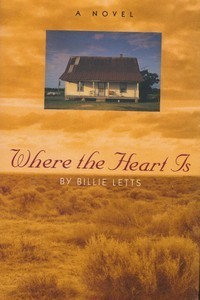
The novel begins with Novalee and Willy Jack, a couple of kids on their way from Tennessee to California. Novalee is 17, 7 months pregnant and totally afraid of the number 7. At age 7 her mother ran off on her, and once she got cut by a customer while she was waitressing. Repairing the damage took 77 stitches.
After Novalee's shoes fall through a hole in their beat-up car, Willy Jack stops at a Wal-Mart in Sequoyah, Oklahoma so she can go to the ladies' room and buy new sandals. The cashier hands her $7.77 in change, and Novalee returns to the parking lot to find that she's been abandoned.
She has nowhere else to go, so Novalee spends the day in Wal-Mart. This is how she meets Sister Husband, a friendly woman in charge of the Welcome Wagon for the town. She mistakes Novalee for someone named Ruth Ann Mott, and gives her a welcome basket. Novalee also becomes aquainted with Moses Whitecotton, Wal-Mart photographer, who gives her advice about naming her baby. Later, Native American Benny Goodlucky gives her a buckeye tree.
Novalee begins to live at Wal-Mart, hiding out during closing time and sleeping in the store after hours. The tree becomes sicker and sicker as she continues squatting in the store. Novalee doesn't just stay at Wal-Mart, however. She goes to the library to find books that can help her with the tree, and here she meets Forney Hull. He's charged with caring for his sister, the librarian, and seems a little off-kilter himself.
Novalee delivers the baby in the store, but Forney sees her and breaks in to take her to the hospital. This is where she meets Lexi, a nurse with lots of kids. Novalee ends up living with Sister and becoming good friends with Forney. At the end, she finds Willy Jack again. Novalee takes him home before she goes to find Forney and tell him of her true feelings: she's in love with him.
The Film
In the movie, Natalie Portman is Novalee Nation and she shines in the role. Novalee begins as a timid young girl, but she finds her way through the course of the story and realizes her true potential. Stockard Channing plays a memorable Sister, and Ashley Judd is positively charming as Lexi (though physically she was ill-suited to the role). If you haven't seen this tear-jerker, you are truly missing out. But if you, like me, become familiar with just one version of the story you're only getting part of the entire tale.

Sally Field appears briefly as Novalee's mother, who runs off with the $500 Novalee received from Wal-Mart after her baby is born. In the film, Sister arrives to pick Novalee up from the hospital instead. Joan Cusack later appears as Willy Jack's agent. He fell into trouble one night and got arrested, but in jail Willy Jack composed a hit country song. He messes up his opportunity, of course, the way he messed up so many others, and Willy Jack comes to ill ends. But he inadvertently tells Novalee what she needs to hear: that one lie can change an entire life. Novalee rushes to Forney to tell him she lied when she told him she didn't love him.
What Got Adapted?
In the book, Novalee is afraid of the number 7. On film, it's changed to 5. Sister has blue hair in the book, but Stockard Channing's hair is normal on film. One of the most notable differences is Lexi's character. In the book, Lexi is obese. Ashley Judd plays Lexi on film, and she could not be construed as being anything close to obese. In the film, Lexi marries Ernie to get her happy ending. This doesn't happen in the book. Benny is left out of the film entirely; Sister gives Novalee the tree in the adaptation.
The movie is a tear-jerker, but it's also a feelgood story. The book is a little grittier, a little more real and heartfelt. The biggest difference is in the ending. In the film, Novalee and Forney get married in Wal-Mart and (one presumes) live happily ever after. They do not marry in the book at all, and Forney doesn't even go to college. He travels instead and eventually settles in Chicago.

The Book
Where the Heart Is, by Billie Letts, was published in 1995. It became a film after Oprah singled it out as a Book Club selection.

The novel begins with Novalee and Willy Jack, a couple of kids on their way from Tennessee to California. Novalee is 17, 7 months pregnant and totally afraid of the number 7. At age 7 her mother ran off on her, and once she got cut by a customer while she was waitressing. Repairing the damage took 77 stitches.
After Novalee's shoes fall through a hole in their beat-up car, Willy Jack stops at a Wal-Mart in Sequoyah, Oklahoma so she can go to the ladies' room and buy new sandals. The cashier hands her $7.77 in change, and Novalee returns to the parking lot to find that she's been abandoned.
She has nowhere else to go, so Novalee spends the day in Wal-Mart. This is how she meets Sister Husband, a friendly woman in charge of the Welcome Wagon for the town. She mistakes Novalee for someone named Ruth Ann Mott, and gives her a welcome basket. Novalee also becomes aquainted with Moses Whitecotton, Wal-Mart photographer, who gives her advice about naming her baby. Later, Native American Benny Goodlucky gives her a buckeye tree.
Novalee begins to live at Wal-Mart, hiding out during closing time and sleeping in the store after hours. The tree becomes sicker and sicker as she continues squatting in the store. Novalee doesn't just stay at Wal-Mart, however. She goes to the library to find books that can help her with the tree, and here she meets Forney Hull. He's charged with caring for his sister, the librarian, and seems a little off-kilter himself.
Novalee delivers the baby in the store, but Forney sees her and breaks in to take her to the hospital. This is where she meets Lexi, a nurse with lots of kids. Novalee ends up living with Sister and becoming good friends with Forney. At the end, she finds Willy Jack again. Novalee takes him home before she goes to find Forney and tell him of her true feelings: she's in love with him.
The Film
In the movie, Natalie Portman is Novalee Nation and she shines in the role. Novalee begins as a timid young girl, but she finds her way through the course of the story and realizes her true potential. Stockard Channing plays a memorable Sister, and Ashley Judd is positively charming as Lexi (though physically she was ill-suited to the role). If you haven't seen this tear-jerker, you are truly missing out. But if you, like me, become familiar with just one version of the story you're only getting part of the entire tale.

Sally Field appears briefly as Novalee's mother, who runs off with the $500 Novalee received from Wal-Mart after her baby is born. In the film, Sister arrives to pick Novalee up from the hospital instead. Joan Cusack later appears as Willy Jack's agent. He fell into trouble one night and got arrested, but in jail Willy Jack composed a hit country song. He messes up his opportunity, of course, the way he messed up so many others, and Willy Jack comes to ill ends. But he inadvertently tells Novalee what she needs to hear: that one lie can change an entire life. Novalee rushes to Forney to tell him she lied when she told him she didn't love him.
What Got Adapted?
In the book, Novalee is afraid of the number 7. On film, it's changed to 5. Sister has blue hair in the book, but Stockard Channing's hair is normal on film. One of the most notable differences is Lexi's character. In the book, Lexi is obese. Ashley Judd plays Lexi on film, and she could not be construed as being anything close to obese. In the film, Lexi marries Ernie to get her happy ending. This doesn't happen in the book. Benny is left out of the film entirely; Sister gives Novalee the tree in the adaptation.
The movie is a tear-jerker, but it's also a feelgood story. The book is a little grittier, a little more real and heartfelt. The biggest difference is in the ending. In the film, Novalee and Forney get married in Wal-Mart and (one presumes) live happily ever after. They do not marry in the book at all, and Forney doesn't even go to college. He travels instead and eventually settles in Chicago.
Published on February 22, 2014 05:30
February 20, 2014
Writing 101: Do Looks Matter?
Ernest Hemingway did not describe his characters, and his fame never suffered for it. So do looks matter, and should you or shouldn't you include them in your books?
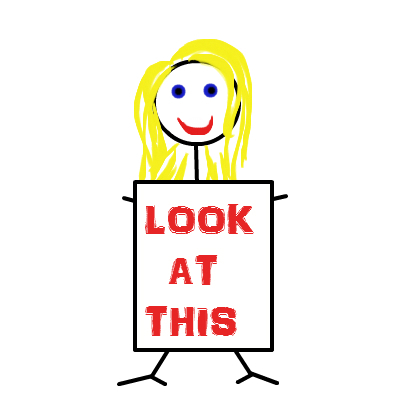
Let's Get Physical
Anne Shirley has red hair. It's an important part of her book series, and something everyone knows about her. In this case, hair is a big part off the story. But I've read many others where the looks of the main character didn't much matter...and they were included anyway.
But you as the author may want me to see what you want, and that's when looks do matter. A clear description of a character also helps you with branding (always important). After all, what would Harry Potter be without his glasses?
It's your story to tell, so you decide whether or not you need to add physical descriptions.

Let's Get Physical
Anne Shirley has red hair. It's an important part of her book series, and something everyone knows about her. In this case, hair is a big part off the story. But I've read many others where the looks of the main character didn't much matter...and they were included anyway.
But you as the author may want me to see what you want, and that's when looks do matter. A clear description of a character also helps you with branding (always important). After all, what would Harry Potter be without his glasses?
It's your story to tell, so you decide whether or not you need to add physical descriptions.
Published on February 20, 2014 05:30
February 19, 2014
Writing 101: How Do You Write?
Have you ever looked at those images of the proper typing position? It's some weird guy sitting straight up with his elbows bent just so and his wrists arched just right and who the heck has ever written a novel from this position? I've had one knee up, both legs crossed, two feet propped up and I'm not at all above completely laying down while typing. How do you write...and how strange are you for doing it that way?
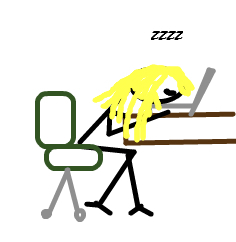
Positioning
According to legend, Virginia Woolf wrote standing up. It's because of a lifelong rivalry with her sister, who was an artist. Virginia didn't want her sister to say she had the more difficult job. There are lots of weird ways to write. Do you use one of them?
Jack Kerouac wrote all of On the Road on pieces of paper he taped together to create one massive scroll. This method actually did have a function, as odd as it sounds. Using one sheet of paper allowed him to work quickly without changing the paper in the typewriter. It's just too bad he didn't have Google Drive.
James Joyce wrote in a white coat with crayons. Much of Finnegans Wake was written on cardboard. Joyce wrote in bed while lying on his stomach, and all of this sounds incredibly weird. However, there was a reason for all these oddities. Joyce was practically blind, so the thick lines of the crayons made it easier for him to see his words. The white coat reflected light that helped to illuminate his writing.
Some writers write strangely, but often there's a reason for what they're doing. You have it pretty easy as an author today. Digital devices and cloud storage allow you to access your books from anywhere, so you can develop all sorts of quirks of your own. Write on the subway, while walking in the park, from the top of a building if you want. But put yourself and your body in a position that feels comfortable to you. There should be no straining nor stretching, no discomfort (unless you stay in one position for many hours; even a comfortable position can cause some pain when this is the case). And above all, you should pay attention to your wrists while you write.
Don't be quirky just to do it. Be comfortable while you write, and if you develop some weird habits then so be it. Do whatever you need to do to stay creative while keeping your body healthy. And when someone asks you how you write, say like a pro.

Positioning
According to legend, Virginia Woolf wrote standing up. It's because of a lifelong rivalry with her sister, who was an artist. Virginia didn't want her sister to say she had the more difficult job. There are lots of weird ways to write. Do you use one of them?
Jack Kerouac wrote all of On the Road on pieces of paper he taped together to create one massive scroll. This method actually did have a function, as odd as it sounds. Using one sheet of paper allowed him to work quickly without changing the paper in the typewriter. It's just too bad he didn't have Google Drive.
James Joyce wrote in a white coat with crayons. Much of Finnegans Wake was written on cardboard. Joyce wrote in bed while lying on his stomach, and all of this sounds incredibly weird. However, there was a reason for all these oddities. Joyce was practically blind, so the thick lines of the crayons made it easier for him to see his words. The white coat reflected light that helped to illuminate his writing.
Some writers write strangely, but often there's a reason for what they're doing. You have it pretty easy as an author today. Digital devices and cloud storage allow you to access your books from anywhere, so you can develop all sorts of quirks of your own. Write on the subway, while walking in the park, from the top of a building if you want. But put yourself and your body in a position that feels comfortable to you. There should be no straining nor stretching, no discomfort (unless you stay in one position for many hours; even a comfortable position can cause some pain when this is the case). And above all, you should pay attention to your wrists while you write.
Don't be quirky just to do it. Be comfortable while you write, and if you develop some weird habits then so be it. Do whatever you need to do to stay creative while keeping your body healthy. And when someone asks you how you write, say like a pro.
Published on February 19, 2014 05:30
February 18, 2014
Hope-Full Dreams
"If you, like me, loved her Deck of Lies series, you MUST read this one."
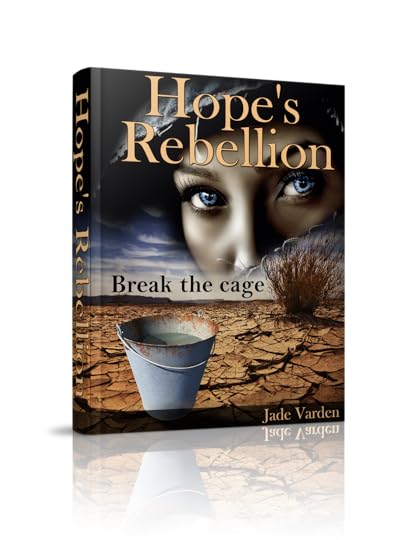
"Anyone with a mature point of view, love for clever stories and in search for a good book should read it."
Hope's Rebellion has been reviewed at Reading...Dreaming, friend to the blog but brutally truthful when it comes to books.
Read the whole review to find out why you should get your free copy of the book before the end of February. Go to Smashwords with the code WQ47M to get it in any electronic format.

"Anyone with a mature point of view, love for clever stories and in search for a good book should read it."
Hope's Rebellion has been reviewed at Reading...Dreaming, friend to the blog but brutally truthful when it comes to books.
Read the whole review to find out why you should get your free copy of the book before the end of February. Go to Smashwords with the code WQ47M to get it in any electronic format.
Published on February 18, 2014 11:30
Writing 101: Rewriting History
When it comes to historical stories, I'm a bit of a purist. I want every single detail to be accurate to the time period, and that's it. But lots of people do not agree with me. Many storytellers are doing very well by rewriting history. So when will it be okay for you to do it, too?
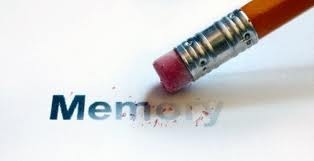
Anything Quentin Tarantino Can Do, I Can Do Better
After all, if Disney can change the tale of Pocahontas and Tarantino can change the outcome of World War II, it's okay if I write a book about Queen Elizabeth living as a secret lesbian -- right?
The appropriate term for this sort of thing is historical revisionism, and it's been happening since history was written down. Some scholars argue, in fact, that all history as we know it today has been rewritten with time. Isn't it the winners who get to tell the story of the battle? So if all history is a little bit suspect, why can't I turn a former President into a killer of supernatural beasts?
I'm referring to Abraham Lincoln, Vampire Hunter, of course. I didn't know the man personally, so I can't guess either way how he might feel about this story. But I do know I was surprised to find that it existed at all. Talk about rewriting history.
It's been done before in lots of stories, and it's been done a lot. As a matter of fact, I wrote a post recently about a film that randomly inserted Queen Victoria into the plot. Some historical facts, figures and points of interest are bound to crop up in books. I've seen King Charles I in many, many books I've read and films I've watched (he was quite a character).
The question isn't should it be done or can it be done, it's is it legal? That was my first question about a vampire-hunting Abraham Lincoln, and a primary concern for any indie author.
Because it's very likely that you don't have the funds to hire the kind of lawyer that Disney can afford. Of course Disney has the guts to rewrite history, but do you?
If you use the name of any real person, historical figure or otherwise, you could be sued over it. Write about a President, a royal, even a schoolteacher from Oklahoma who once lived and breathed, and the heirs of that person could choose to step forward and sue you for libel. In many places, they would be well within their rights to do so. You will be running that risk if you write a novel using real names, but you may be willing to take that risk. In fact, should you get sued you may get some media attention that could help you boost sales (depending on who is suing you and what for -- however please do not run right out and get sued and say Jade made you do it because I don't advocate that).
Rewriting history can be lots of fun. It can be satisfying. And it can make for a great story. But tread lightly about what you're going to write and who about, because you never know who may be reading.

Anything Quentin Tarantino Can Do, I Can Do Better
After all, if Disney can change the tale of Pocahontas and Tarantino can change the outcome of World War II, it's okay if I write a book about Queen Elizabeth living as a secret lesbian -- right?
The appropriate term for this sort of thing is historical revisionism, and it's been happening since history was written down. Some scholars argue, in fact, that all history as we know it today has been rewritten with time. Isn't it the winners who get to tell the story of the battle? So if all history is a little bit suspect, why can't I turn a former President into a killer of supernatural beasts?
I'm referring to Abraham Lincoln, Vampire Hunter, of course. I didn't know the man personally, so I can't guess either way how he might feel about this story. But I do know I was surprised to find that it existed at all. Talk about rewriting history.
It's been done before in lots of stories, and it's been done a lot. As a matter of fact, I wrote a post recently about a film that randomly inserted Queen Victoria into the plot. Some historical facts, figures and points of interest are bound to crop up in books. I've seen King Charles I in many, many books I've read and films I've watched (he was quite a character).
The question isn't should it be done or can it be done, it's is it legal? That was my first question about a vampire-hunting Abraham Lincoln, and a primary concern for any indie author.
Because it's very likely that you don't have the funds to hire the kind of lawyer that Disney can afford. Of course Disney has the guts to rewrite history, but do you?
If you use the name of any real person, historical figure or otherwise, you could be sued over it. Write about a President, a royal, even a schoolteacher from Oklahoma who once lived and breathed, and the heirs of that person could choose to step forward and sue you for libel. In many places, they would be well within their rights to do so. You will be running that risk if you write a novel using real names, but you may be willing to take that risk. In fact, should you get sued you may get some media attention that could help you boost sales (depending on who is suing you and what for -- however please do not run right out and get sued and say Jade made you do it because I don't advocate that).
Rewriting history can be lots of fun. It can be satisfying. And it can make for a great story. But tread lightly about what you're going to write and who about, because you never know who may be reading.
Published on February 18, 2014 05:30
February 17, 2014
Writing 101: Who Are You?
I've written posts about finding your audience, figuring out your characters and working out your plot. But I've failed to address one of the fundamental issues I struggle with almost every day: who am I? If you're an author and lots of other things besides, you may also struggle with this very basic query.

If This is Belgium, It Must Be Tuesday
For me, the issue is probably a little more convoluted than most. I was born with a name, like most people, and got pretty used to it over the years. I'm a modern gal, but at his request I took my husband's name upon our marriage, so I acquired another name at this time. I earn my bread as a freelance writer by day, and for this I use a pen name. It's different from the pen name I'm using right now, which is the one I've reserved for certain self-publishing endeavors. I'm about to acquire another pen name for my day job (long story). So if I get a phone call, I have to clearly establish to whom the person wants to speak before I know who the heck I'm supposed to be.
It's a lot to deal with. I divide my day into parts, wherein I perform tasks for one name, then another, and eventually get to doing stuff for myself last. But sometimes it all becomes so overwhelming and confused, I don't know who "myself" is anymore. Am I supposed to be Jade right now, or someone else? I'll find myself triple-checking email accounts and Twitter screens because I'm afraid of confusing the one with the other.
If you've experienced the same type of identity crisis, I understand your pain. And because I'm Jade right now, I know exactly how to help. This is what I do.
It's even easier than you think. I've learned that the key to keeping it straight is not to bring everything together, but to keep it all separate. For example, Jade uses one browser across every device I touch: Mozilla. But I've got the Chrome app on everything as well, and another name uses this for their business. I have a third browser that's used for another name. It helps that I keep some of my identities linked to Google, and I have a helpful picture in the corner that I won't ever changed because then I won't know which browser goes with whom. It is a little exhausting, admittedly, but I don't get my different identities mixed up. Even their documents are stored in folders beginning with their initials (I mark a lot of stuff with initials).
How you access your stuff, how you label your folders and files and which devices you use for what all matter. Set rules and boundaries on each of your identities; know what goes with whom. Use one cloud for this name, a different cloud for that one. Keeping your interests separate is the only way to keep them straight. The name you use as a self-published author is your professional name, so keep it professional. Put your personal stuff somewhere else, access it through different programs and remember who you are when you're online. Otherwise, your identity crisis could turn into a real crisis.

If This is Belgium, It Must Be Tuesday
For me, the issue is probably a little more convoluted than most. I was born with a name, like most people, and got pretty used to it over the years. I'm a modern gal, but at his request I took my husband's name upon our marriage, so I acquired another name at this time. I earn my bread as a freelance writer by day, and for this I use a pen name. It's different from the pen name I'm using right now, which is the one I've reserved for certain self-publishing endeavors. I'm about to acquire another pen name for my day job (long story). So if I get a phone call, I have to clearly establish to whom the person wants to speak before I know who the heck I'm supposed to be.
It's a lot to deal with. I divide my day into parts, wherein I perform tasks for one name, then another, and eventually get to doing stuff for myself last. But sometimes it all becomes so overwhelming and confused, I don't know who "myself" is anymore. Am I supposed to be Jade right now, or someone else? I'll find myself triple-checking email accounts and Twitter screens because I'm afraid of confusing the one with the other.
If you've experienced the same type of identity crisis, I understand your pain. And because I'm Jade right now, I know exactly how to help. This is what I do.
It's even easier than you think. I've learned that the key to keeping it straight is not to bring everything together, but to keep it all separate. For example, Jade uses one browser across every device I touch: Mozilla. But I've got the Chrome app on everything as well, and another name uses this for their business. I have a third browser that's used for another name. It helps that I keep some of my identities linked to Google, and I have a helpful picture in the corner that I won't ever changed because then I won't know which browser goes with whom. It is a little exhausting, admittedly, but I don't get my different identities mixed up. Even their documents are stored in folders beginning with their initials (I mark a lot of stuff with initials).
How you access your stuff, how you label your folders and files and which devices you use for what all matter. Set rules and boundaries on each of your identities; know what goes with whom. Use one cloud for this name, a different cloud for that one. Keeping your interests separate is the only way to keep them straight. The name you use as a self-published author is your professional name, so keep it professional. Put your personal stuff somewhere else, access it through different programs and remember who you are when you're online. Otherwise, your identity crisis could turn into a real crisis.
Published on February 17, 2014 05:30
February 16, 2014
Indie News: Amazon Bestsellers Make Less Than Minimum Wage
Aching to get on the Amazon bestseller list? Despite the title, the view isn't really so much better from the top of the heap. According to a new report, the authors on that list aren't even making federal minimum wage.

Money, Money, Money
In fact, you'd earn more money (now) as a full-time government employee than as an Amazon bestselling author. Hugh Howey released a report detailing the actual earnings of Amazon's indie and self-published authors. He studied 3,439 authors responsible for the 7,000 bestsellers listed on Amazon. These are books that sell more than one copy daily. Only 944 of them were earning more than $58 per day, which is the amount you'd receive working 8 hours per day at federal minimum wage earnings of $7.25.
It's not very promising, but other numbers-crunchers argue that this is just a glimpse of a small piece of the big picture. Publishing is changing quickly now, and self-publishing is becoming more of a force in the industry.

Money, Money, Money
In fact, you'd earn more money (now) as a full-time government employee than as an Amazon bestselling author. Hugh Howey released a report detailing the actual earnings of Amazon's indie and self-published authors. He studied 3,439 authors responsible for the 7,000 bestsellers listed on Amazon. These are books that sell more than one copy daily. Only 944 of them were earning more than $58 per day, which is the amount you'd receive working 8 hours per day at federal minimum wage earnings of $7.25.
It's not very promising, but other numbers-crunchers argue that this is just a glimpse of a small piece of the big picture. Publishing is changing quickly now, and self-publishing is becoming more of a force in the industry.
Published on February 16, 2014 05:30
February 15, 2014
Books on Film: A Little Princess
Frances Hodgson Burnett, one of the greatest children's book authors of all time, first conceived of "A Little Princess" way, way back in 1888. It got its lasting title and became a novel in 1905. A few years later, it became an iconic Shirley Temple film. And many years after that, I became familiar with the tale. It's still one of my favorites.
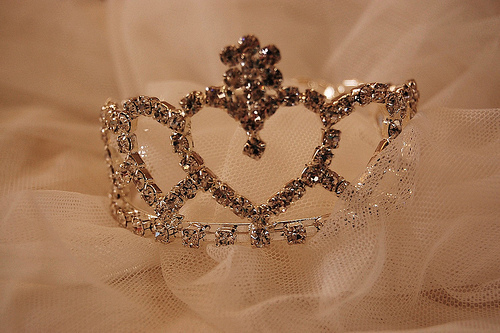
The Book
A Little Princess was serialized before it became a book. When the story was complete near the turn of the century, it was revised and richer in content. The book follows Sara Crewe, who is 7, as she arrives at Miss Mincin's boarding school in London. Sara is the only child of the well-to-do Captain Crewe. The two have been residing in India, but now it's time to go to school.
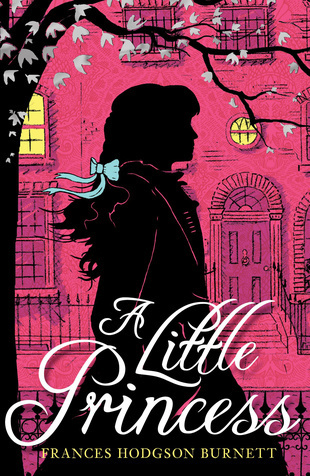
She fits in well with the other girls at the school, delighting them with tales of India. They begin calling her "a little princess" because she's ladylike and has lived such a lavish lifestyle. But Sara is not snobbish despite her upbringing. She becomes friends with the school's misfits: Ermegarde, who is not regarded as intelligent; Lottie, a very young student; and Becky, a scullery maid.
Tragedy strikes when Captain Crewe is killed in a mining accident and subsequent business troubles render his estate very poor on funds indeed. Miss Minchin realizes she won't be reimbursed for the money she's spent on Sara since the last check, and puts the girl to work in the school as a servant instead.
Wearing the mean black dress she's been given, Sara is forced to work to earn her keep at the school. Living next door to Becky, Sara runs errands, teaches other students and engages in all sorts of chores. One night a pet monkey finds its way into Sara's room, and she becomes acquainted with a man named Ram Dass who lives next door. Sara begins to receive food and other small comforts, and she shares them with Becky generously.
Upon actually going next door to return the monkey, Sara meets Mr. Carrisford. He's her father's former business partner and he's been searching for her. At the end of the story, Sara's fortune is restored and she will be the daughter of Carrisford from now on. Becky is invited to come along as Sara's attendant.
It's a fine happy ending...but I must admit to liking the movie ending much, much better.
The Film
The movie was made in 1939, which some have said was the best year for film in history. It starred Shirley Temple, then the must-have child star, and it was her first to be shot completely in Technicolor. It's currently in the public domain, which means it's free to watch.
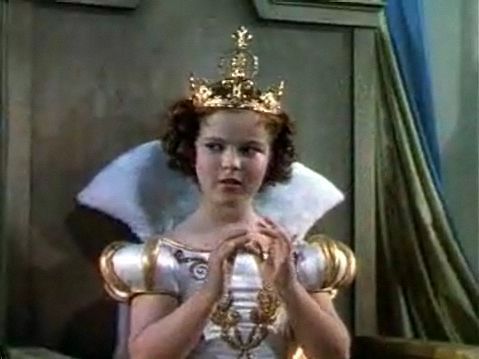
The plot is changed around a bit, and this is one of the rare instances where I believe the changes actually improved the story. This time around, Captain Crewes has been called up to serve in the Second Boer War. This gives us a tangible reason for why he's ditching his young daughter in London.
Sara is given a hobby, horseback riding, and the appropriate animal to go with it. She lives at the school as a princess for much less time on film (because years go by in the book, and Shirley Temple just wasn't going to grow that quickly), receiving word that her father has died shortly after her arrival. His real estate has been confiscated, and that's why Sara is so poor this time.
Sara is again turned into a servant, but quickly strikes up her relationship with next door neighbor Ram Dass. She doesn't believe her father is really dead, so Sara spends all her free time combing through the hospitals. A few musical numbers speed the film along, and then Miss Minchin visits Sara's attic room. Here she discovers edible treats, rich blankets and other lavish gifts that Ram Dass has provided. Miss Minchin instantly believes Sara has stolen all the goods and locks her in the attic. Sara escapes and runs to the hospital.
An unknown man is at the hospital today, and viewers see it as Sara runs around trying to escape detection. It's Captain Crewe, but he has no papers and some sort of brain trauma whereby he has no memory. Also at the hospital today is none other than Queen Victoria herself, who meets Sara and actually grants her permission to search for her missing father. The actress really looks like the real Queen, and the addition of so grand a character is one of my favorite aspects of the adaptation.
Will Sara find her father, go work for the Queen or get captured by Miss Minchin and the police? You'll have to see the film in order to find out. Temple is an adorable dynamo who unfailingly carries all major scenes of the movie. This adaptation (the only one I'm prepared to acknowledge) does vary from the original book, so you'll have to enjoy both to truly experience the story.
Shirley Temple

Temple passed away just a few days ago at age 85. She began her film career in 1932 and remained active in the industry until 1949. She is, arguably, the most famous child actress of all time. Watch her in "A Little Princess," and you'll know how she earned this legacy.

The Book
A Little Princess was serialized before it became a book. When the story was complete near the turn of the century, it was revised and richer in content. The book follows Sara Crewe, who is 7, as she arrives at Miss Mincin's boarding school in London. Sara is the only child of the well-to-do Captain Crewe. The two have been residing in India, but now it's time to go to school.

She fits in well with the other girls at the school, delighting them with tales of India. They begin calling her "a little princess" because she's ladylike and has lived such a lavish lifestyle. But Sara is not snobbish despite her upbringing. She becomes friends with the school's misfits: Ermegarde, who is not regarded as intelligent; Lottie, a very young student; and Becky, a scullery maid.
Tragedy strikes when Captain Crewe is killed in a mining accident and subsequent business troubles render his estate very poor on funds indeed. Miss Minchin realizes she won't be reimbursed for the money she's spent on Sara since the last check, and puts the girl to work in the school as a servant instead.
Wearing the mean black dress she's been given, Sara is forced to work to earn her keep at the school. Living next door to Becky, Sara runs errands, teaches other students and engages in all sorts of chores. One night a pet monkey finds its way into Sara's room, and she becomes acquainted with a man named Ram Dass who lives next door. Sara begins to receive food and other small comforts, and she shares them with Becky generously.
Upon actually going next door to return the monkey, Sara meets Mr. Carrisford. He's her father's former business partner and he's been searching for her. At the end of the story, Sara's fortune is restored and she will be the daughter of Carrisford from now on. Becky is invited to come along as Sara's attendant.
It's a fine happy ending...but I must admit to liking the movie ending much, much better.
The Film
The movie was made in 1939, which some have said was the best year for film in history. It starred Shirley Temple, then the must-have child star, and it was her first to be shot completely in Technicolor. It's currently in the public domain, which means it's free to watch.

The plot is changed around a bit, and this is one of the rare instances where I believe the changes actually improved the story. This time around, Captain Crewes has been called up to serve in the Second Boer War. This gives us a tangible reason for why he's ditching his young daughter in London.
Sara is given a hobby, horseback riding, and the appropriate animal to go with it. She lives at the school as a princess for much less time on film (because years go by in the book, and Shirley Temple just wasn't going to grow that quickly), receiving word that her father has died shortly after her arrival. His real estate has been confiscated, and that's why Sara is so poor this time.
Sara is again turned into a servant, but quickly strikes up her relationship with next door neighbor Ram Dass. She doesn't believe her father is really dead, so Sara spends all her free time combing through the hospitals. A few musical numbers speed the film along, and then Miss Minchin visits Sara's attic room. Here she discovers edible treats, rich blankets and other lavish gifts that Ram Dass has provided. Miss Minchin instantly believes Sara has stolen all the goods and locks her in the attic. Sara escapes and runs to the hospital.
An unknown man is at the hospital today, and viewers see it as Sara runs around trying to escape detection. It's Captain Crewe, but he has no papers and some sort of brain trauma whereby he has no memory. Also at the hospital today is none other than Queen Victoria herself, who meets Sara and actually grants her permission to search for her missing father. The actress really looks like the real Queen, and the addition of so grand a character is one of my favorite aspects of the adaptation.
Will Sara find her father, go work for the Queen or get captured by Miss Minchin and the police? You'll have to see the film in order to find out. Temple is an adorable dynamo who unfailingly carries all major scenes of the movie. This adaptation (the only one I'm prepared to acknowledge) does vary from the original book, so you'll have to enjoy both to truly experience the story.
Shirley Temple

Temple passed away just a few days ago at age 85. She began her film career in 1932 and remained active in the industry until 1949. She is, arguably, the most famous child actress of all time. Watch her in "A Little Princess," and you'll know how she earned this legacy.
Published on February 15, 2014 05:30



